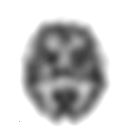
Photo from wikipedia
In this paper, we present a detailed study of the origin of structural defects and their role on the effects of Eu3+-substitution (x = 0.0, 0.05......, 0.3) in place of… Click to show full abstract
In this paper, we present a detailed study of the origin of structural defects and their role on the effects of Eu3+-substitution (x = 0.0, 0.05......, 0.3) in place of Bi3+ in Bi1−x Eu x FeO3 nanocrystalline multiferroic perovskite samples. The samples were synthesized through a sol-gel route and characterized by x-ray diffraction and transmission electron microscopy. The energy dispersive analysis of x-rays clearly demonstrated the effective replacement of Bi3+ ions by Eu3+ and a possibility of generation of oxygen vacancies. UV–vis diffuse reflectance spectra were recorded to determine the band gap, which showed a continuous decrease on increased substitution. The phenomenon indicated the creation of defects-induced energy levels in the band gap closer to the conduction band. Positron annihilation spectroscopy revealed the presence of structural defects like trivacancies within the Bi1−x Eu x FeO3 nanocrystallites. The surfaces of nanocrystallites smaller than the thermal diffusion lengths of positrons also acted as trapping centres. The transformation from the distorted rhombohedra structure to an orthorhombic configuration with an accompanying lattice contraction at x > 0.2 influenced the positron lifetimes and the intensities. Substitution also resulted in the recombination of the pre-existed vacancies with a fraction of the doped ions. Coincidence Doppler broadening measurements confirmed cationic vacancies as the predominant defects. Magneto-electric voltages measured under a.c. magnetic fields of different strengths showed an increase until x = 0.2 and then decreased concomitantly with the transformation of the crystallites to the orthorhombic structure.
Journal Title: Journal of Physics D: Applied Physics
Year Published: 2018
Link to full text (if available)
Share on Social Media: Sign Up to like & get
recommendations!